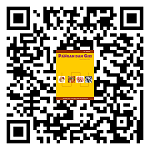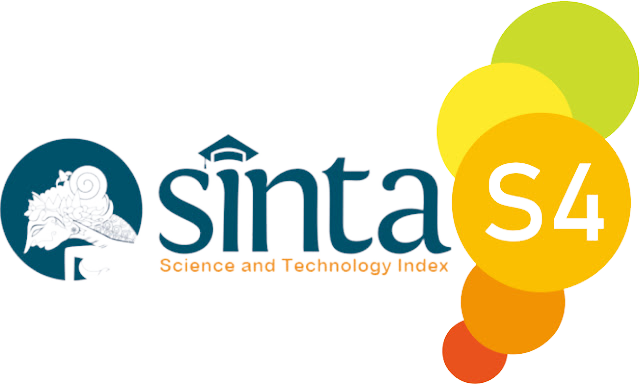Potensi Lengkuas Sebagai Bahan Pengawet Ikan: Review
(1) Program Studi Teknologi Pangan, Universitas Muhammadiyah Semarang Jl. Kedungmundu Raya No. 18 Semarang
(2) Program Studi Teknologi Pangan, Universitas Muhammadiyah Semarang Jl. Kedungmundu Raya No. 18 Semarang
(3) Program Studi Teknologi Pangan, Universitas Muhammadiyah Semarang Jl. Kedungmundu Raya No. 18 Semarang
(4) Program Studi Teknologi Hasil Pertanian, Universitas Veteran Bangun Nusantara
(*) Corresponding Author
Abstract
Keywords
Full Text:
PDFReferences
Abdullah F., Subramanian, P., Ibrahim, H., Malek, S.N.A., Lee, G.S. and Hong, S.L., 2015. Chemical Composition, Antifeedant, Repellent, and Toxicity Activities of the Rhizomes of Galangal, Alpinia galanga Against Asian Subterranean Termites, Coptotermes gestroi and Coptotermes curvignathus (Isoptera: Rhinotermitidae). J Insect Sci. 2015; 15(1): 7; 1-7.
Akram S.B., 2013. Bioaktivitas minyak atsiri rimpang lengkuas merah (Alpinia purpurata K.Schum.) terhadap pertumbuhan bakteri Staphylococcus aureus dan Escherichia coli. Skripsi Jurusan Biologi Fakultas Matematika dan Ilmu Pengetahuan Alam Universitas Hasanuddin. Makasar.
Amelia, Sudarso dan Hartani. 2010. Aktivitas antibakteri gel ekstrak lengkuas (Alpinia galanga) terhadap Pesudomonas aeruginosa dan Bacillus subtillis. J.Phamacy. Vol 07:03; 78-83
Aptiningsih, Santjaka A., dan Rudijanto , H. 2016. Pengaruh pemberian berbagai konsentrasi dan jenis pengawet alami terhadap jumlah angka kuman dan masa simpan ikan mujahir. Buletin Keslingmas, Vol 36, No.1; 24-29
Araby, Ali and Abdeldalem (2013). Evaluation of Irradiated Galangal Rhizomes (Alpinia galanga) as natural food preservatives (Antioxidant and Antimicrobial). Journal of Applied Sciences Research, 9(1): 743-757, 2013: 743-757
Basri, A.M, Taha, H., Ahmad N., 2017. Review on the Pharmacological Activities and Phytochemicals of Alpinia officinarum (Galangal) Extracts Derived from BioassayGuided Fractionation and Isolation. Pharmacogn.Rev: 11; 43-56
Bermawie N., Purwianti S, Melati, and Meilawati N.L.W. 2012. Karakter Morfologi, hasil, dan Mutu enam genotip Lengkuas pada tiga Agroekologi. Bul.Mittro, VO.23.No 2. es 2012. 125-135
Boziaris, L.S and Parlapani F.F. 2017. Specific Spoilage Organisms (SSOs) in Fish. 2017. Bevilacqua A., Corbo, M.R., and Sinigagli M (Editors). The Microbiological Quality of Food. Elsevier. :1-7
Chaweepack T., Muenthaisong B., Chaweepack S., Kamei K. 2015. The Potential of Galangal (Alpinia galanga Linn.) Extract against the Pathogens that Cause White Feces Syndrome and Acute Hepatopancreatic Necrosis Disease (AHPND) in Pacific White Shrimp (Litopenaeus vannamei). International Journal of Biology; Vol. 7, No. 3; 2015 ISSN 1916-9671 E-ISSN 1916. Published by Canadian Center of Science and Education.
Firmawati, M., Mamik S.M.., Rumandang M., dan Verdiana, M.R.M. 2009. Isolasi minyak atsiri lengkuas merah. Jurnal Tenosains. 2(1): 21-23.
Florensia F., Dewi P., dan Utami. 2012. Pengaruh ekstrak lengkuas pada perendaman ikan bandeng terhadap jumlah bakteri. Unnes Journal of Life Science. 1(2) 2012; 113-118.
Hartini A.N., 2019. Daya antibakteri lengkuas (Alpinia galanga) olahan terhadap total mikroba ikan mas (Cyprinus carpio). Tugas akhir (skripsi) Program Studi Teknologi Pangan Fakultas Teknik. Universitas Pasundan Bandung.
Hidayah, R.Y. 2015. Pengaruh penggunaan berbagai massa lengkuas (Alpinia galanga) terhadap sifat organoleptik dan daya simpan ikan nila (Orieochromis niloticus) segar. Skripsi. Jurusan Kimia Fakultas Matematika dan Ilmu Pengetahuan Alam. Universitas Negeri Semarang.
https://ihram.republika.co.id/berita/r59dbt313/mahasiswa-uny-ekstrak-lengkuas-bisa-basminyamuk-aedes-aegypti, diakses pada tanggal 6 Maret 2023
https://www.cnnindonesia.com/gaya-hidup/20190227145418-255-373138/mengulik-manfaatlengkuas-untuk-kesehatan. Mengulik manfaat Lengkuas untuk Kesehatan, diakses pada tanggal 6 Maret 2023
Mahae N and Chaiseri S. 2009 Antioxidant activities and antioxidative component in extracts of Alpinia galanga (L) Sw. Kasetsart J. (Nat.Sci.) 43: 358-369 Muniandy P., Paramasivam M., Chear N J-Y, Singh D, Kernain D., 2019. A study of antibacterial efficacy of Alpinia galangal extracts against Staphylococcus aureus, Staphylococcus epidermidis and Listeria monocytogenes. J. Pham.Sci & Res. Vol.11 (8): 3061-3066
Khasanah. 2013. Naskah Publikasi. Antimikrobia ekstrak rimpang lengkuas (Alpinia galanga) terhadap pertumbuhan mikrobia perusak ikan dengan pengemulsi tween 80. Universitas Muhammadiyah Surakarta.
Lely N, Nurhasana F, Azizah M. 2017. Aktivitas Antibakteri Minyak Atsiri Rimpang Lengkuas Merah (Alpinia purpurata K. Schum). Scientia Vol 7 (1): 42-48
Oonmetta-aree, J., Suzuki T., Gasaluck P., Eumkeb, G. (2006). Antimicrobial properties and action of galangal (Alpinia galanga Linn). On Staphyloccus aureus. LWT 39 (2006): 1214-1220
Petruzzi L., Corbo M.R., Sinigaglia M., and Bevilacqua A, 2017. Microbial Spoilage of Foods: Fundamentals. Bevilacqua A., Corbo, M.R., and Sinigagli M.(Editors). The Microbiological Quality of Food. Elsevier. :1-7
Parwata dan Dewi. 2008. Isolasi dan uji aktivitaas antibakteri minyak atsiri dari rimpang lengkuas (Alpinia galanga.L). Jurnal Kimia 2(2): 100-104 Ravindran and I. Balachandran. Galangal. Peter, K.V. 2006. Handbook of herbs and spices. CRC Press. Boston New York Washington, DC. Pp: 357-363
Riyantono, Abida I.W., Farid A., 2009. Tingkat ketahanan kesegaran ikan mas (Cyprinus carpio) menggunakan asap cair. Jurnal Kelautan. Vol.2:1; 66-72
Rahmah, Wijaya M., Mustarin. 2017. Pengaruh penambahan lengkuas merah (Alppinia purpurata) terhadap dendeng sayat ikan bandeng (Charnos chanos) selama penyimpanan. Jurnal Pendidikan Teknologi Pertanian, Vol.3 (2017): 180-194.
Senoaji, F.B., Agustini, T.W., dan Purnamayati L., 2017. Aplikasi minyak atsiri rimpang lengkuas pada edible coating karagenan sebagai antibakteir bakso ikan nila. Jurnal Pengolahan Hasil Pertanian Indonesia. 20 (2): 380-391.
Sumayani, Kusdarwati R And Cahyoko Y. 2008. Daya antibakteri perasan rimpang lengkuas ( alpinia galanga) dengankonsentrasi berbeda terhadap pertumbuhan aeromonas hydrophila secara in vitro. berkala ilmiah perikanan vol3 no.1 april 2008. pp 83-87
Srividya A.R, Dhanabal S.P, Satish kumar M.N, Parth kumar H.2017. Antioxidant and Antidiabetic Activity of Alpinia Galanga. Intenational Journal of Pharmacognosy and Phytochemical Research 2010; 3(1):6-12.
Malik T., Pandey D.K., Roy P., and Okram., A. 2016. Evaluation of Phytochemicals, Antioxidant, Antibacterial and Antidiabetic Potential of Alpinia galanga and Eryngium foetidum Plants of Manipur (India). Pharmacogn. J. 8(5):459-464
Tammu H., Harmain R.M., dan Dali F.A., 2014. Mutu organoleptik dan mikrobiologis ikan kembung segar dengan penggunaan larutan lengkuas merah. Jurnal Ilmiah Perikanan dan Kelautan. Vol.II (4): 164-168.
Udomthanadech, K., Vajrodaya S., Paisooksantivatana Y, 2015. Antibacterial properties of the extracts from some zingibereous species in Thailand against bacteria causing diarrhea and food poisoning in human. Iternational Transaction Journal fo Enngineering, Management & Applied Sciences Technologies. 203-2013
Verma R.K., Mishra G., Singh P., Jha, K.K., Khosa R.L. 2011. Alpinia galanga – An Important Medicinal Plant: A review. Der Pharmacia Sinica. 2(1): 142-154. Pelagia Research Library.
Article Metrics
Abstract view : 857 timesPDF - 299 times
DOI: https://doi.org/10.26714/jpg.13.1.2023.59-66
Refbacks
- There are currently no refbacks.
Copyright (c) 2023 Jurnal Pangan dan Gizi
 | Jurnal Pangan dan Gizi |

This work is licensed under a Creative Commons Attribution-NonCommercial-NoDerivatives 4.0 International License.












